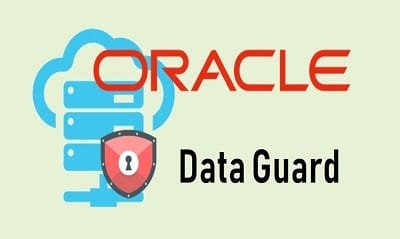Enroll for Online Oracle Data Guard Training by Experts, Learn Oracle Data Guard Certification Training with Course Material | Tutorial Videos | Attend Demo for free & you will find Spiritsofts is the best institute within reasonable fee.
Spiritsofts is the best Training Institutes to expand your skills and knowledge. We Provides the best learning Environment. Obtain all the training by our expert professionals which is having working experience from Top IT companies.
The Training in is every thing we explained based on real time scenarios, it works which we do in companies.
Experts Training sessions will absolutely help you to get in-depth knowledge on the subject.
- 30 hours of Instructor Training Classes
- Lifetime Access to Recorded Sessions
- Real World use cases and Scenarios
- 24/7 Support
- Practical Approach
- Expert & Certified Trainers
Introduction to Oracle Data Guard
- Causes of Data Loss
- Oracle Data Guard Architecture
- Types of Standby Databases (benefits of each type)
- Using the Data Guard Broker
- Differentiating Between Standby Databases and Data Guard Broker Configuration
- Data Protection Modes
- Performing Role Transitions
Creating a Physical Standby Database by Using SQL and RMAN Commands
- Preparing the Primary Database
- Creating the Physical Standby Database
Oracle Data Guard Broker: Overview
- Oracle Data Guard Broker Features
- Oracle Data Guard Broker Configurations
- Data Guard Monitor Process
- Data Guard Monitor Configuration Files
- Benefits of Using the Data Guard Broker
- Comparing Configuration Management With and Without the Broker
- Using DGMGRL
Creating a Data Guard Broker Configuration
- Defining a Data Guard Configuration (overview)
- Setting up the Broker Configuration Files
- Setting the DG_BROKER_START Initialization Parameter to TRUE to start the Data Guard Broker
- Creating the Broker Configuration
- Adding the Standby Database to the Configuration
Creating a Physical Standby Database by Using Enterprise Manager Grid Control
- Using Enterprise Manager Grid Control to Create a Physical Standby Database
- Using the Add Standby Database Wizard
- Verifying a Configuration
- Editing Standby database properties
- Viewing the Data Guard Configuration Status
Creating a Logical Standby Database
- Monitoring the Data Guard Configuration by Using Enterprise Manager Grid ControlVerifying the ConfigurationViewing Log File Details
- Using Enterprise Manager Data Guard Metrics
- Using the DGMGRL SHOW CONFIGURATION Command to Monitor the Configuration
- Viewing Standby Redo Log Information
- Monitoring Redo Apply
Creating and Managing a Snapshot Standby Database
- Snapshot Standby Database: Architecture
- Converting a Physical Standby Database to a Snapshot Standby Database
- Activating a Snapshot Standby Database: Issues and Cautions
- Viewing Snapshot Standby Database Information
- Converting a Snapshot Standby Database to a Physical Standby Database
Using Oracle Active Data Guard
- Using Real-Time Query
- Enabling and Disabling Real-Time Query
- Enabling Block Change Tracking on a Physical Standby Database
- Creating Fast Incremental Backups
- Monitoring Block Change Tracking
Configuring Data Protection Modes
- Preparing to Create a Logical Standby Database
- Checking for Unsupported Objects , Data Types, and Tables
- Ensuring Unique Row Identifiers
- Creating the Logical Standby Using SQL Commands and Grid Control
- Securing your Logical Standby Database
Performing Role Transitions
- Contrast switchover vs. failover
- Preparing for a Switchover
- Performing a Switchover using DGMGRL and Enterprise Manager
- Types of Failovers
- Re-enabling Disabled Databases
Using Flashback Database in a Data Guard Configuration
- Overview of Flashback Database
- Configuring Flashback Database
- Using Flashback Database Instead of Apply Delay
- Using Flashback Database and Real Time Apply
- Flashback Through Standby Database Role Transitions
- Using Flashback Database After Failover
Enabling Fast-Start Failover
- Installing the Observer Software
- Configuring Fast-Start Failover
- Configuring Automatic Reinstatement of the Primary Database
- Initiating Fast-Start Failover from an Application
- Disabling Fast-Start Failover
- Starting and Stopping the Observer
- Moving the Observer to a new Host
Managing Client Connectivity
- Understanding Client Connectivity in a Data Guard Configuration
- Preventing Clients from Connecting to the Wrong Database
- Creating Services for the Data Guard Configuration Databases
- Automating Client Failover in a Data Guard Configuration
- Automating Failover for OCI Clients
- Automating Failover for OLE DB Clients
- Configuring JDBC Clients for Failover
Performing Backup and Recovery Considerations in an Oracle Data Guard Configuration
- Backup and Recovery of a Logical Standby Database
- Using the RMAN Recovery Catalog in a Data Guard Configuration
- Creating the Recovery Catalog
- Registering a Database in the Recovery Catalog
- Configuring Daily Incremental Backups
- Using a Backup to Recover a Data File on the Primary Database
- Recovering a Data File on the Standby Database
Patching and Upgrading Databases in a Data Guard Configuration
- Upgrading an Oracle Data Guard Broker Configuration
- Using SQL Apply to Upgrade the Oracle Database
- Performing a Rolling Upgrade by Using SQL Apply
- Performing a Rolling Upgrade by Using an Existing Logical Standby Database
- Performing a Rolling Upgrade by Creating a New Logical Standby Database
- Performing a Rolling Upgrade by Using a Physical Standby Database
Monitoring a Data Guard Configuration
- Monitoring the Data Guard Configuration by Using Enterprise Manager Grid ControlVerifying the ConfigurationViewing Log File Details
- Using Enterprise Manager Data Guard Metrics
- Using the DGMGRL SHOW CONFIGURATION Command to Monitor the Configuration
- Viewing Standby Redo Log Information
- Monitoring Redo Apply
Optimizing a Data Guard Configuration
- Using Enterprise Manager Grid Control to monitor configuration performance
- Setting the ReopenSecs and NetTimeout database properties
- Compressing Redo Data
- Delaying the Application of Redo Data
- Optimizing SQL Apply
- Adjusting the Number of APPLIER and PREPARER processes
